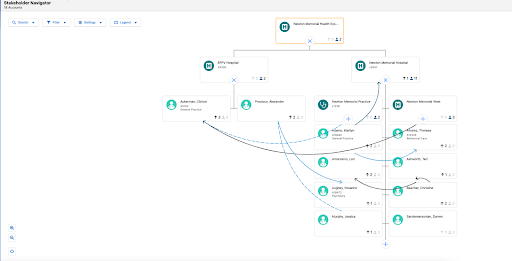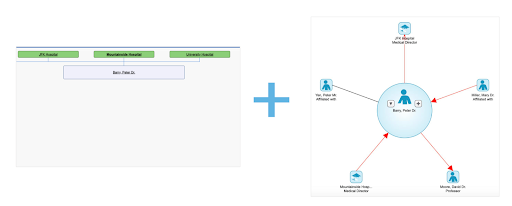What is Stakeholder Navigator?
Stakeholder Navigator has everything end users need to understand who the key stakeholders are within the account, and the relationships they have to other people in the organization. They can then use that information to determine who to target as a part of the account plan.

For example, a Key Account Manager (KAM) has a new key account to cover. They use Stakeholder Navigator to get an idea of who the key stakeholders are within the account, and what relationships they have with other people in the organization. Then they use that information to understand who to target as a part of the account plan.
Stakeholder Navigator combines the child hierarchy and affiliations into one view.
Affiliations
Affiliations are relationships between two entities, typically healthcare professionals (HCPs) or healthcare organizations (HCOs), and other entities such as pharmaceutical companies or medical institutions.
Some common use cases for affiliations include:
- HCP to HCP relationships - Your customers have complex relationships and networks in their organization. Capturing these relationships along with the strength can help with context and messaging.
- Key Opinion Leaders (KOLs) - Tracking affiliations between KOLs and HCOs to understand their influence and expertise in specific therapeutic areas
- Research Collaborations - Capturing affiliations between research institutions and HCPs to track collaborative projects or clinical trials
Child Hierarchies
Child hierarchies represent a structure where multiple child records are associated with a single parent record. For example, a parent HCO can be linked to its associated child HCPs.
Child hierarchies make it easier to view and manage related records. They allow users to quickly access information about the parent entity and its associated children. For example, a pharmaceutical company can easily see the parent HCO's details and access information about the HCPs associated with it.
